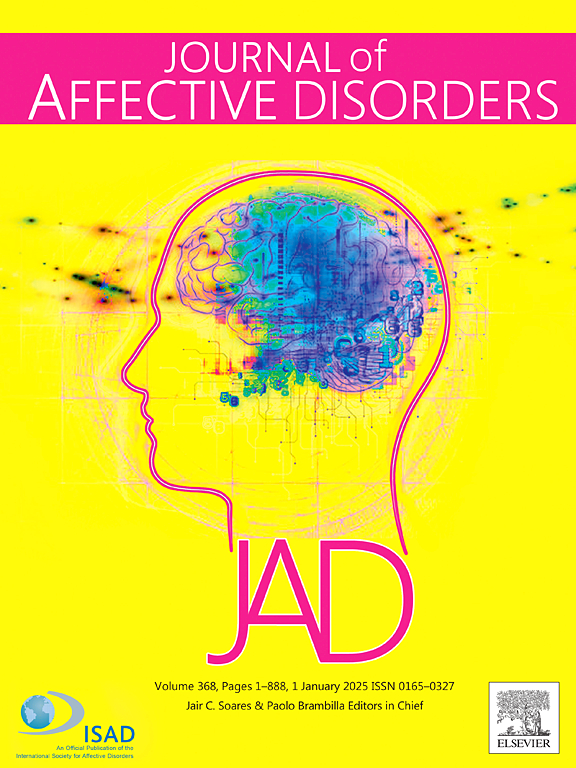澳大利亚不同群体的儿童和青少年在利用心理健康服务方面的不平等
IF 4.9
2区 医学
Q1 CLINICAL NEUROLOGY
引用次数: 0
摘要
目的调查被诊断患有严重精神和/或行为障碍和自杀倾向的澳大利亚儿童和青少年的社会人口阶层在利用精神卫生服务方面的不平等。方法采用具有全国代表性的澳大利亚儿童和青少年样本,包括2898名家长和1736名儿童。将Bolck, Croon, and Hagenaars (BCH)方法应用于预先识别的潜在类别,以确定调整后的类别成员。Logistic回归和预测边际分析在三种情况下检验了这些类别与精神卫生服务利用之间的关系:总体而言,精神和/或行为障碍,以及自杀。结果社会经济地位低、家庭不完整的1类儿童和青少年的精神和/或行为障碍和自杀率最高,心理健康服务使用率最高。第2类(低技能但有凝聚力)和第4类(富裕的单亲家庭)的精神障碍和自杀率高于第3类(稳定的中产阶级)和第5类(特权阶级)。然而,第4类的服务使用率低于第3类和第5类,而第2类的使用率在所有类别中最低,尽管紊乱率较高。结论:该研究突出了不同社会人口阶层在心理健康服务利用方面的显著差异。来自贫困和不完整家庭背景的儿童和青少年面临的心理健康问题负担最重,但也更频繁地利用服务。相比之下,第2类和第4类尽管紊乱发生率较高,但未充分利用服务,表明获得服务存在障碍。政府的举措应侧重于提高父母的认识、家庭结构和社会经济条件,以提高服务的利用率,减少心理健康方面的差距。本文章由计算机程序翻译,如有差异,请以英文原文为准。
Inequalities in the utilisation of mental health services amongst different clusters of Australian children and adolescents
Aims
To investigate the inequalities in mental health service utilisation amongst socio-demographic classes of Australian children and adolescents diagnosed with major mental and/or behavioural disorders, and suicidality.
Methods
A nationally representative sample of Australian children and adolescents was assessed, comprising 2898 parent and 1736 child participants. The Bolck, Croon, and Hagenaars (BCH) method was applied to pre-identified latent classes to determine adjusted class membership. Logistic regressions and predictive marginal analysis examined associations between these classes and mental health service utilisation in three scenarios: overall, with mental and/or behavioural disorders, and with suicidality.
Results
Children and adolescents in Class 1 (Underprivileged) characterised by low socio-economic status and non-intact families showed the highest prevalence of mental and/or behavioural disorders and suicidality and the highest utilisation of mental health services. Classes 2 (Low-Skilled but Cohesive) and 4 (Affluent Single Parent) had higher prevalence rates of disorders and suicidality than Classes 3 (Stable Middle Class) and 5 (Privileged). However, Class 4 utilised services less than Classes 3 and 5, while Class 2 had the lowest utilisation amongst all classes, despite higher disorder prevalence.
Conclusions
The study highlights significant disparities in mental health service utilisation across socio-demographic classes. Children and adolescents from underprivileged and non-intact family backgrounds face the highest burden of mental health issues but also utilise services more frequently. In contrast, Classes 2 and 4, despite higher disorder prevalence, underutilise services, indicating barriers to access. Government initiatives should focus on improving parental awareness, family structures, and socio-economic conditions to enhance service utilisation and reduce mental health disparities.
求助全文
通过发布文献求助,成功后即可免费获取论文全文。
去求助
来源期刊

Journal of affective disorders
医学-精神病学
CiteScore
10.90
自引率
6.10%
发文量
1319
审稿时长
9.3 weeks
期刊介绍:
The Journal of Affective Disorders publishes papers concerned with affective disorders in the widest sense: depression, mania, mood spectrum, emotions and personality, anxiety and stress. It is interdisciplinary and aims to bring together different approaches for a diverse readership. Top quality papers will be accepted dealing with any aspect of affective disorders, including neuroimaging, cognitive neurosciences, genetics, molecular biology, experimental and clinical neurosciences, pharmacology, neuroimmunoendocrinology, intervention and treatment trials.
 求助内容:
求助内容: 应助结果提醒方式:
应助结果提醒方式:


